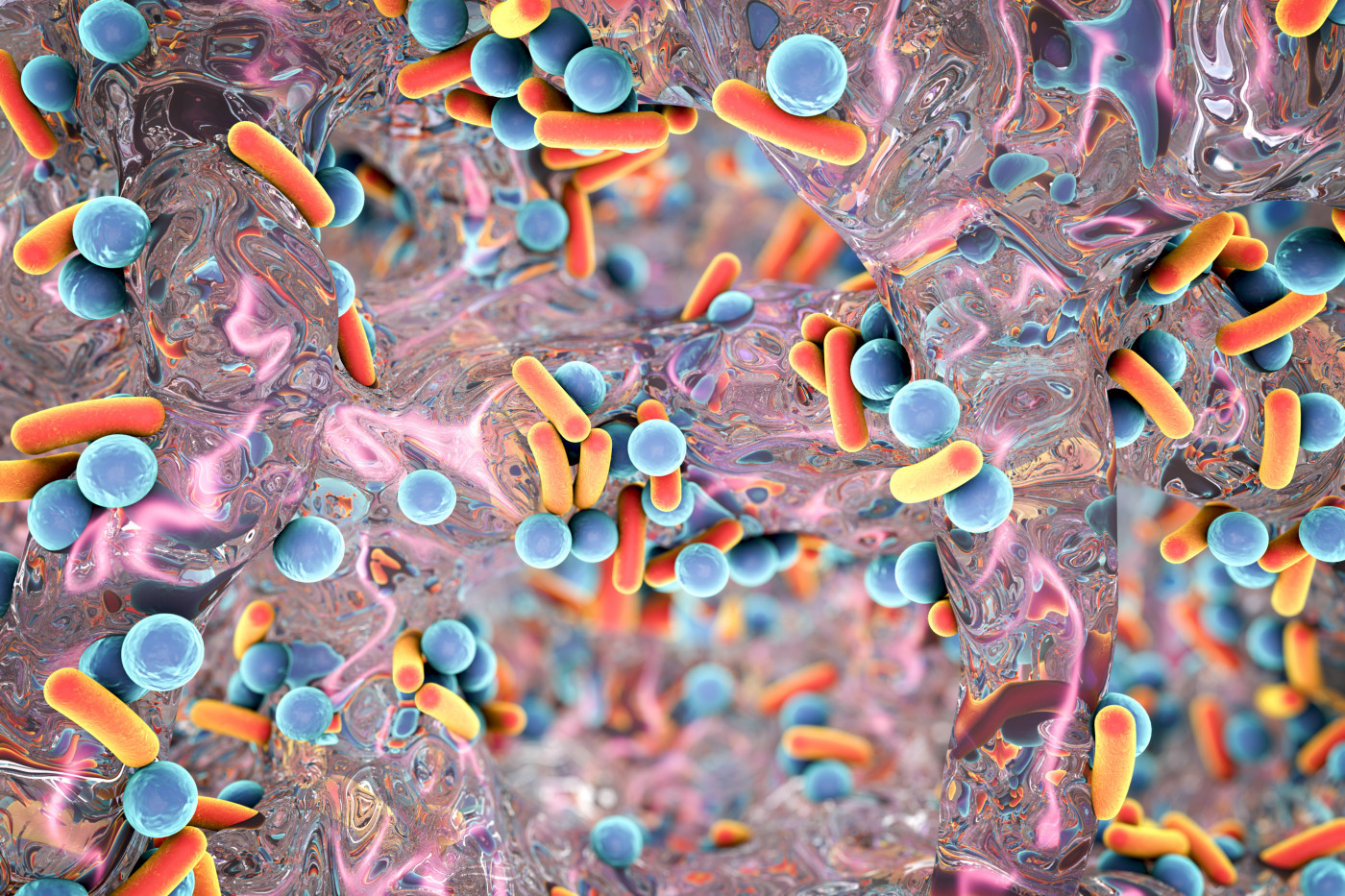Bacteria Can Pass Memory of Biofilm Formation to Descendants, Study Shows
Written by |

Bacteria can transmit memory across generations so their descendants will know how to attach themselves to surfaces and form communities called biofilms, a study reports.
Researchers’ findings shed light on cystic fibrosis-related bacteria’s early steps in biofilm formation. These pathogens cause persistent airway infections in people with the disease.
The study, “Multigenerational memory and adaptive adhesion in early bacterial biofilm communities,” was published in the journal Proceedings of the National Academy of Sciences.
Researchers at UCLA and colleagues focused their study on a bacteria commonly found in CF patients’ airway — Pseudomonas aeruginosa. It grows into biofilms, or densely packed communities, on airway surfaces.
Previous studies showed that bacteria could work together to form a biofilm, a conglomeration that helps protect them from harmful factors in the environment.
Researchers followed the behavior of individual bacteria throughout multiple generations.
“The first step in forming a biofilm is that bacteria must sense the surface and develop the ability to attach,” Calvin Lee, a UCLA graduate student and the study’s co-first author, said in a press release.
“We discovered that the descendants could remember the surface sensing signals of their ancestors,” Lee said.
“It was really exciting to me that we’ve learned how reversible and irreversible attachment are linked during early biofilm formation,” said George O’Toole, a professor at the Geisel School of Medicine at Dartmouth who was the study’s senior author. “These concepts were described in the 1930s, but it took us almost 90 years to understand how they work hand-in-hand to help drive early biofilm formation.”
Researchers wanted to know how biofilm-forming bacteria sense surfaces as well as attach themselves to them. They discovered that bacteria have a memory that is transmitted across multiple generations. They do this with two kinds of signals — one from a molecule inside their cells called cAMP and another form a structure they use to move, called a type IV pili.
These two signals from surface-adapted bacteria persist for generations, “allowing cells to return to the surface progressively better adapted for sensing and attachment,” the researchers wrote.
“Bacteria sense and remember via this rhythmic pattern, which is pivotal for their decision to suppress motility [the ability to move], become stationary and ultimately attach to a surface irreversibly and form a biofilm,” said Gerard Wong, a professor of bioengineering, chemistry and biochemistry at UCLA’s California NanoSystems Institute. He was one of the study’s lead authors.
“I was pleasantly surprised to discover how much can be learned about the decision-making process of bacteria during the early stages of biofilm formation by compiling a rigorous multiscale characterization of the system from the molecular level all the way up to the level of the biofilm,” said Ramin Golestanian, director of the Max Planck Institute for Dynamics and Self-Organization, and the study’s co-senior author.






